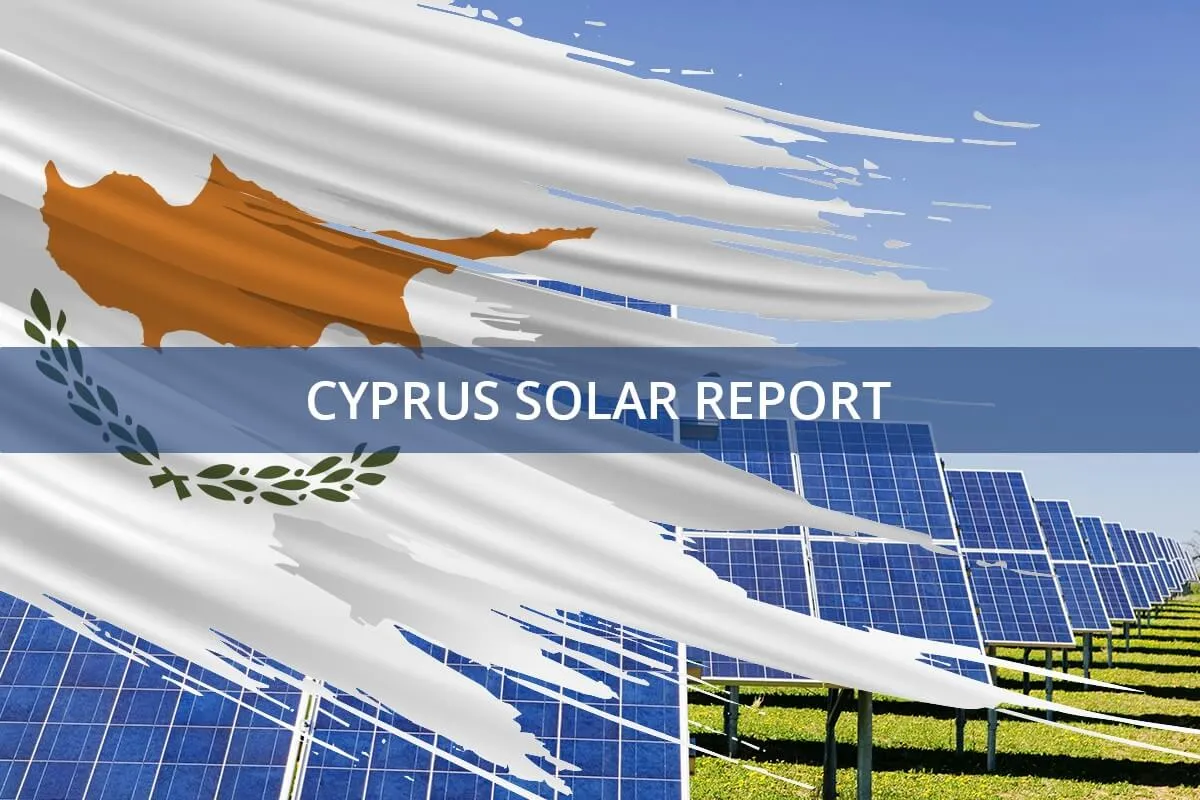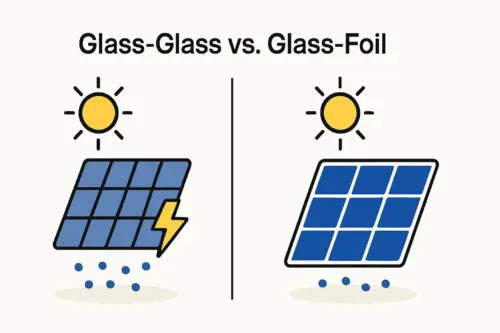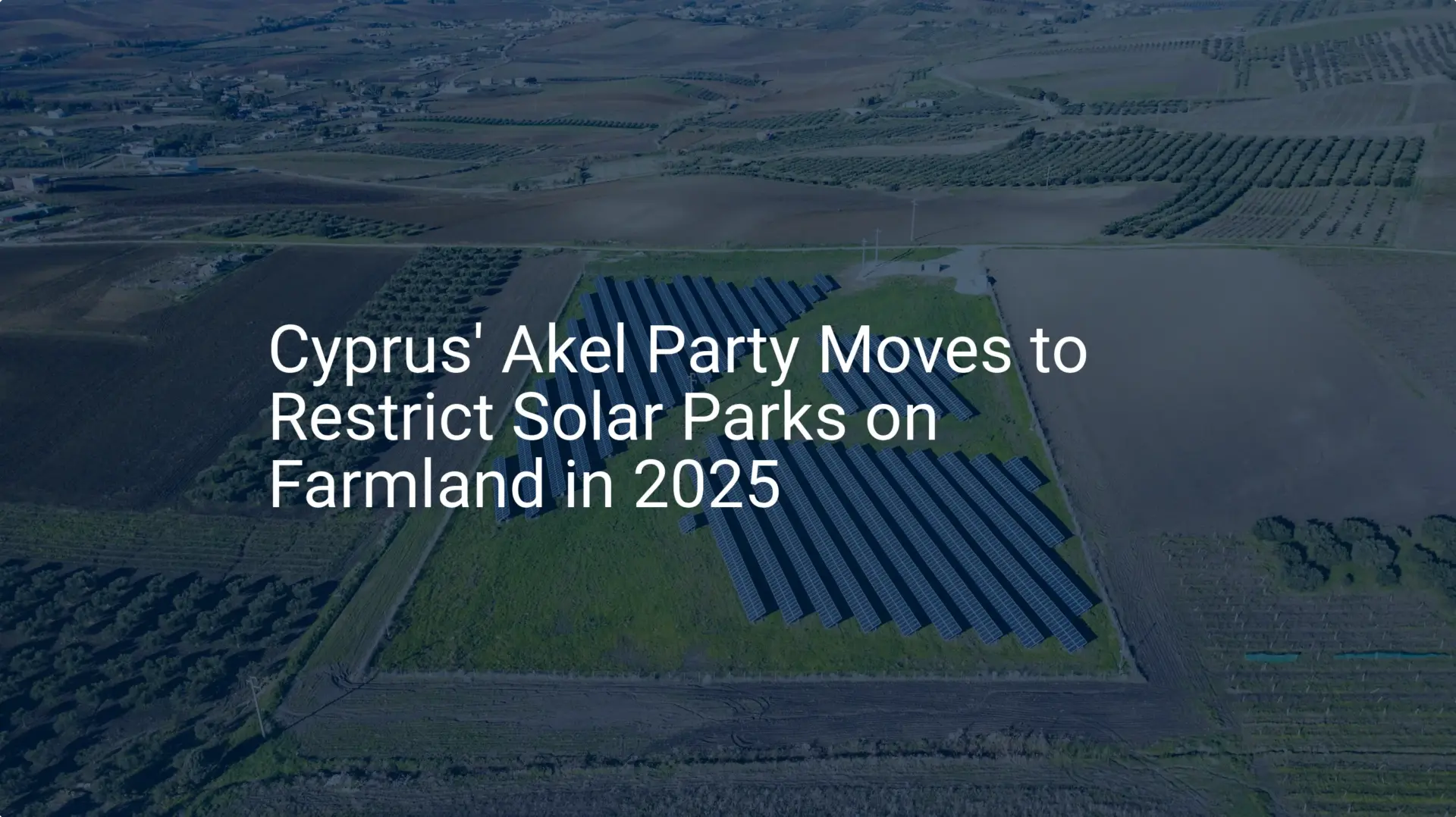Choosing a location for a new manufacturing facility is one of the most consequential decisions an entrepreneur can make. Too often, the focus narrows to the cost per square meter, overlooking critical factors that can dramatically impact both the initial investment and long-term viability.
A cheaper plot might seem attractive, but if it requires extensive civil works or a multi-million-euro electrical substation upgrade, those initial savings are quickly erased. This case study examines the process of siting a new solar module factory within Cyprus’s designated industrial zones. It provides a practical framework applicable to any region, highlighting how a systematic approach to site selection de-risks the investment and lays the foundation for a successful enterprise. For those exploring how to start a solar panel manufacturing business, understanding the nuances of infrastructure is a vital first step.
The Strategic Importance of Government-Managed Industrial Zones
Many governments establish designated industrial zones to streamline development and attract investment, and Cyprus is an excellent example of this model. The Ministry of Energy, Commerce, and Industry manages several well-organized industrial areas across the island, offering distinct advantages for new manufacturing ventures.
These zones are not simply empty tracts of land but planned ecosystems designed to support industrial activity, typically featuring:
-
Pre-approved Zoning: The land is already designated for industrial use, which significantly simplifies the permitting process.
-
Established Infrastructure: Access roads, water mains, and power grids are in place, though their capacity must always be verified.
-
Centralized Administration: A single government body manages lease agreements and development regulations, providing a clear point of contact.
-
Long-Term Leases: In Cyprus, industrial plots are offered on 99-year leaseholds, providing the security needed for a significant capital investment.
Based on J.v.G.’s experience with turnkey projects, leveraging these government-managed zones can shorten project timelines by 6 to 12 months compared to developing a private “greenfield” site that requires extensive zoning changes and utility negotiations.

Key Factors for Site Selection in Cyprus: A Comparative Analysis
The decision framework for selecting a site must extend beyond the rental price to include a thorough analysis of several interdependent factors. Let’s consider the primary industrial zones in Cyprus, such as Strovolos and Ergates (Nicosia District), Aradippou (Larnaca District), and the areas around Limassol.
Land Cost and Availability
The most apparent variable is the lease cost, which is set by the government and varies by location.
-
Prime Locations (e.g., Strovolos): Situated on the edge of the capital, Nicosia, this mature and highly sought-after zone has scarce land and premium lease costs. Availability is often limited to plots returned by previous leaseholders.
-
Developing Locations (e.g., Aradippou): Near the major port city of Larnaca, this zone offers greater availability and more competitive lease rates, representing a strong balance of cost and logistical access.
An investor must assess whether the premium for a prime location is justified or if a developing zone offers better overall value.
Utility Infrastructure: The Critical Checkpoint
For a solar module factory, the single most critical utility is a stable, high-capacity electricity supply. A typical 50 MW solar panel production line has a significant, consistent power draw.
-
Verification is Non-Negotiable: Before signing any lease, it is essential to formally consult the Electricity Authority of Cyprus (EAC) to confirm the available power capacity at the specific plot boundary.
-
The Hidden Cost of Upgrades: A plot may have a power line nearby, but the local substation might not have enough spare capacity. Upgrading a substation or running a new high-voltage line can easily exceed 1 million euros and add significant delays to the project.
-
Water and Waste: While typically less of a constraint than electricity, an adequate water supply for production and sanitation, along with connections to municipal wastewater systems, must also be confirmed.
Logistics and Port Proximity
A solar module factory depends on a global supply chain. Raw materials like solar cells, glass, and aluminum frames are imported, while finished modules are often exported.
-
Port of Limassol: As the country’s primary commercial port, proximity to Limassol is a major logistical advantage for reducing inland transportation costs and lead times.
-
Port of Larnaca: While smaller, Larnaca’s port and international airport provide excellent logistical options, particularly for sites in the Aradippou industrial zone.
-
Highway Access: Easy access to the island’s modern highway network is crucial for the efficient movement of goods and for the daily commute of the workforce.
Practical Comparison: Strovolos Industrial Zone vs. Aradippou Industrial Zone
To illustrate the trade-offs, let’s compare two strong but different options. A typical entry-level factory needs a plot of around 10,000 m² to accommodate a 5,000 m² building—a common layout for a solar panel manufacturing plant.
Strovolos Industrial Zone (Nicosia)
Advantages:
- Mature zone with highly reliable and robust infrastructure.
- Proximity to the administrative and financial center of Nicosia.
- Large, skilled labor pool available in the capital region.
Disadvantages:
- Very limited plot availability.
- Highest lease costs among all industrial zones.
- Heavier traffic can impact logistics during peak hours.
Aradippou Industrial Zone (Larnaca)
Advantages:
- Excellent availability of various plot sizes.
- More competitive lease costs, preserving capital.
- Immediate proximity to Larnaca International Airport and close to the port.
- Direct access to the highway network connecting all major cities.
Disadvantages:
- While its infrastructure is generally good, power capacity for specific plots requires more diligent verification with the EAC than in Strovolos.
- The labor pool in the immediate vicinity is smaller than in Nicosia, though easily accessible.

This analysis shows that while Strovolos offers established prestige, Aradippou often presents a more practical and cost-effective solution for a new venture, provided the necessary due diligence on utility capacity is performed. This careful balancing of factors is central to managing the overall investment for solar panel manufacturing.
Conclusion: A Foundation Built on Due Diligence
Selecting a factory site is a foundational business decision, not merely a real estate transaction. As this case study demonstrates, the optimal choice is rarely the cheapest. Instead, it is the one that offers the best balance of cost, infrastructure, logistics, and regulatory simplicity.
A systematic evaluation, like the one outlined here, transforms a complex decision into a manageable process. By verifying utility capacity, analyzing logistical chains, and understanding the local regulatory environment before committing, an entrepreneur can avoid costly surprises and build their enterprise on solid ground. This level of detailed planning is the hallmark of a professionally managed turnkey factory project.

Frequently Asked Questions (FAQ)
What is the primary advantage of choosing a government-managed industrial zone?
The primary advantage is a streamlined regulatory process. These zones are already zoned for industrial use, which significantly shortens the timeline for obtaining building permits and operational licenses compared to developing a private plot of land.
How long does a typical industrial land lease last in Cyprus?
Industrial plots within government-managed zones in Cyprus are typically offered on a 99-year leasehold basis. This long-term tenure provides the security necessary for making significant capital investments in buildings and equipment.
Is it better to choose a site with existing infrastructure or develop a new one?
For a new manufacturer, selecting a site within an established industrial zone with proven infrastructure is almost always the more prudent choice. Developing a “greenfield” site introduces major variables in cost and timing related to zoning, environmental approvals, and utility connections, adding significant risk to the project.
What is the very first step in verifying a plot’s suitability?
After identifying a potential plot, the first technical step is to submit a formal inquiry to the local electricity authority (the EAC in Cyprus) for a binding statement on the available power capacity at the plot’s boundary. This confirmation must be secured before signing any lease agreements.






